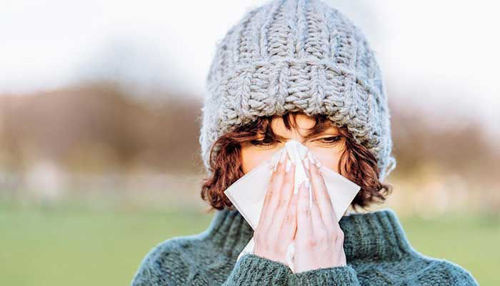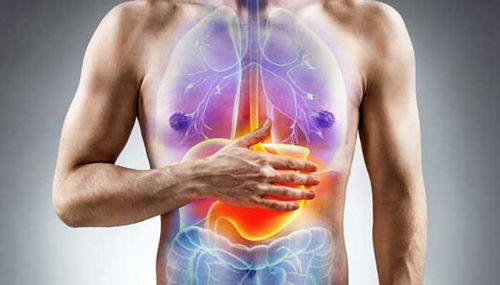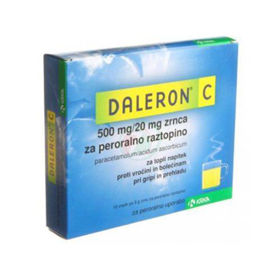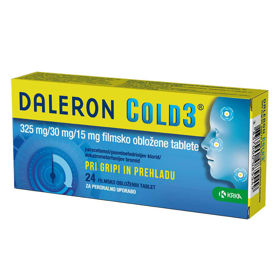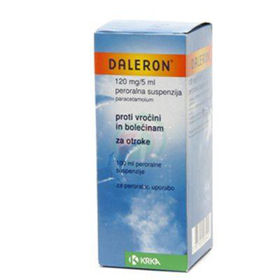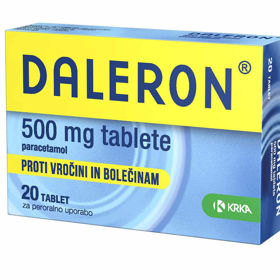A fever is your body's response to fighting an infection or other illness. The medical community defines fever as a body temperature above 38 °C.
HEAT: General | Fever symptoms | Causes of fever | Correct temperature measurement | Cold and fever | Treatment | Potential complications | Questions and Answers | Sources/references
Fever, hyperthermia, or pyrexia is a body temperature higher than usual. Average body temperatures vary but range from 36.1 °C to 37.2 °C.
A part of the brain called the hypothalamus controls a person's body temperature. The hypothalamus may reset the body to a higher temperature level in response to an infection, disease, or other cause.
Figure: average body temperatures range from 36.1 °C to 37.2 °C.
.jpeg)
Fever itself is generally not dangerous, but consult your doctor if:
- the temperature of an adult raises to 39.5 °C or more
- fever does not go down after taking over-the-counter antipyretics, such as ibuprofen
- fever occurs after exposure to high temperatures, which may be a sign of heatstroke
- a baby younger than three months has a rectal temperature of 38°C or higher
- a 3-6 month-old child has a higher than average rectal temperature and is irritable or sleepy
- a 3-6-month-old child has a rectal temperature of 38.8 °C or more
- a child aged 6-24 months has a fever above 38.8 °C for more than one day or other symptoms such as cough or diarrhea
- A child older than two years has a fever accompanied by a rash, discomfort, irritability, lethargy, headache, stiff neck, or recurrent diarrhea or vomiting
Video content: how to deal with a baby who has febrile seizures.

Some children may experience febrile seizures or convulsions due to a rapid temperature rise. Most febrile seizures pass quickly and do not mean your child has epilepsy. These attacks also do no permanent damage.
What are the symptoms?
Symptoms of high body temperature (pyrexia) are as follows:
- fever
- headache
- sweating
- feeling of heat
- sore or tired eyes
- increased thirst
- reduced appetite
Early fever symptoms may still include those listed above, along with additional:
- extreme sweating
- dizziness
- muscle spasms
Image: A cold is a step in the immune system's process to fight the germs that make you sick.
.jpeg)
- fatigue
- weakness
- nausea
Persistent or worsening high fever can also cause:
- mild confusion
- shrunken (small) pupils
- cold, moist, and pale skin
- upset stomach or vomiting
- reduced amount of urine or inability to urinate
Prolonged high fever or a temperature above 40 °C can cause:
- confusion
- hallucinations
- loss of consciousness
- shallow, rapid breathing
- hot, dry, and red skin
- weak, rapid heartbeat
- dilated (large) pupils
- epileptic attack
What can cause a fever?
When your immune system reacts to an illness, the hypothalamus often increases your body temperature. This promotes complex processes that produce more heat and limit heat loss. The shivering you can feel is one way that you additionally produce heat. When you wrap yourself in a blanket because you are cold, you are helping your body to keep warm.
Image: viral infections can be detected by discharge, cough, fever, and sore throat.
.jpg)
Fever has many causes and can be a symptom of almost any disease:
- bacterial infections
- viral infections
- gastrointestinal infections
- urinary tract infections
- skin infections
Fever can also occur due to a reaction to certain medications, a response to vaccinations, and an autoimmune disorder or cancer. Allergies can cause cold-like symptoms, such as sneezing, runny nose, and watery eyes, but usually do not cause a fever.
How to measure your temperature correctly?
The thermometer can be used in several ways, depending on age and needs. The easiest way to measure temperature is to use a digital thermometer.
Video content: how to accurately measure temperature (oral and axillary).

Due to the possibility of mercury exposure or ingestion, glass mercury thermometers have been discontinued and are no longer recommended, nor can they be purchased in pharmacies.
Oral measurement
The first way some people measure their temperature is with a digital thermometer, using the oral method. This method best suits adults and children who can hold the thermometer in their mouth for a long time. Place the thermometer under your tongue and close your mouth to do it right.
Adhere to the following instructions:
- wash your hands
- make sure the thermometer is clean
- avoid eating or drinking for at least 5 minutes before the measurement
- hold the thermometer under the tongue for 40 seconds or at least as long as indicated in the instructions for use
Rectal measurement
Rectal temperature measurement is standard in infants and children three years or younger. However, this method can be complicated because you must still hold the child to record the exact temperature.
The following describes how to correctly use a thermometer for measuring temperature using the rectal method:
- apply lubricant to the tip of the thermometer
- place the baby on the stomach
- keep a diaper or pad under the baby to catch any poop that might come up later
- only insert the tip of the thermometer carefully into the rectum
Image: axillary measurement is an excellent alternative to the oral method, especially for checking high temperatures.
.jpg)
- measure as long as indicated in the instructions for handling the specific thermometer
- after measuring, thoroughly clean the thermometer with soap, water, and alcohol
Axillary measurement
Another standard method of measuring temperature with a digital thermometer is using the armpit. This is an excellent alternative to the oral method for checking high temperatures.
To do it right:
- remove the child's shirt
- make sure their armpit is dry
- hold the thermometer under the armpit with the child's hands down
- measure as long as indicated in the instructions for handling the specific thermometer
- after the measurement, clean the thermometer with soap and water
Ear measurement
This is often the most straightforward option if you need to take a baby or young child's temperature quickly and efficiently. To do it right:
- carefully hold the ear canal
- place a protective hygienic cap on the tip of the thermometer
- insert the thermometer into the ear, but only long enough for the canal to close
- measure as much time as indicated in the instructions
- remove the thermometer and discard the cap
Front measurement
To use the forehead thermometer correctly:
- place the protective cap on the nice of the thermometer to the instructions for use
- carefully place the thermometer on your forehead or place it in front of your forehead if it is a digital measurement
- measure as much time as indicated in the instructions
Image: digital thermometer is safer as it contains no harmful chemicals.
.jpg)
There are many different types of thermometers that you can use to measure temperature, such as:
- Digital thermometer: this is often reasonably accurate and is the fastest way to take an oral, axillary, or rectal temperature.
- Tympanic thermometer: this type of thermometer measures the temperature in the ear by reading infrared heat. Ear thermometers may be quicker and easier for older babies and children but are not recommended if your baby is three months or younger.
- Temporal Arterial Thermometer: Forehead thermometers are also used to measure your temporal temperature, but they may not be as reliable as digital thermometers and are usually more expensive. They are placed on the temporal artery on the forehead and measure the infrared heat coming from the head.
Cold and fever
A cold most often affects the nose and throat and is often harmless. Germs called viruses cause the common cold. For most people, a cold goes away in 7 to 10 days. Symptoms may last longer in people who smoke. Colds often do not require medical attention.
Colds in children and babies
Cold symptoms appear 1 to 3 days after your child has been in contact with the cold virus.
Picture: the symptoms of a cold can be slightly different for each child.
.jpg)
Symptoms often last about one week but can last up to 2 weeks. Symptoms may vary from child to child.
In babies, cold symptoms may include:
- sleeping problems
- irritability
- nasal congestion
- sometimes vomiting and diarrhea
- fever
Older children may have:
- watery eyes
- sneezing
- sore throat
- headache
- fever
- cold
- painful muscles and bones
- mild hacking cough
- scratchy, itchy throat
- stuffy or runny nose
- a watery nasal discharge that later thickens and turns yellow or green
- extreme fatigue
Colds in adults
Symptoms are the same in adults and children, but sometimes symptoms last longer in children. Most colds go away on their own within 7 to 10 days.
Image: A fever with a cold usually occurs at the beginning and can last three to five days.
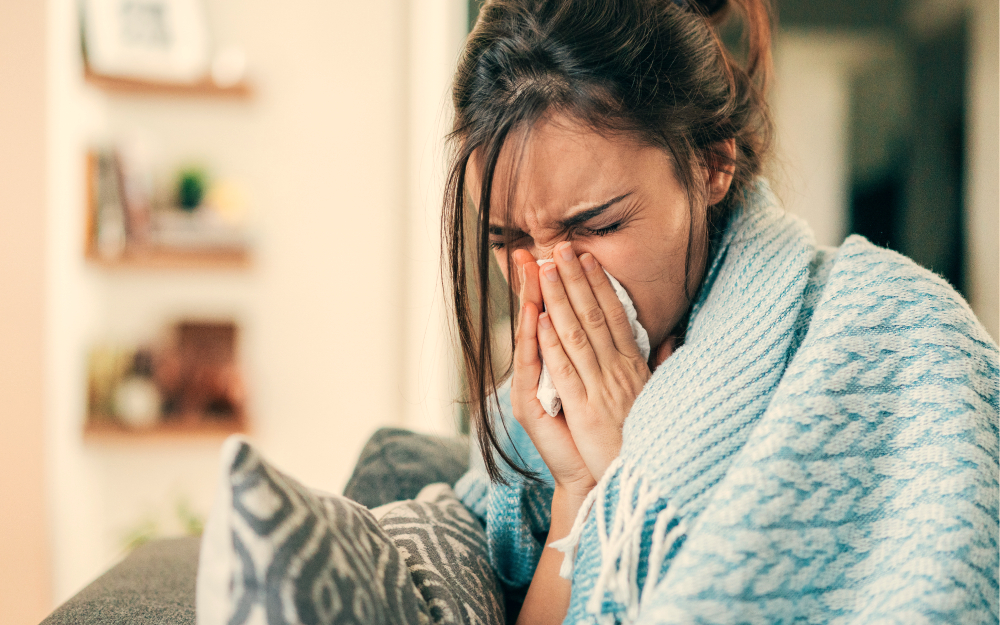
Cold symptoms come on gradually and may include the following:
- sore throat
- headache
- cough
- sneezing
- muscle pains
- stuffy or runny nose
- increased temperature
- pressure in ears and face
- loss of taste and smell
Viruses cause colds and are easily spread to other people. You are contagious until all symptoms are gone, which usually takes 1 to 2 weeks. Colds are spread by coughing and sneezing germs that can live on hands and other surfaces. Rhinoviruses cause most colds.
How is a fever treated?
Although measuring fever with a thermometer is easy, finding the cause can be more complex. In addition to a physical examination, the doctor will ask about your symptoms and observed conditions, the medications you are taking, and whether you have recently traveled to areas with infections or may have other risks of infection.
No treatment is needed if you have a fever but feel mostly fine. Since the job of a fever is to help kill an infection, treating a fever can interfere with the body's efforts to fight germs.
Image: in case of heat, your doctor may have recommended over-the-counter medications.
.jpg)
When it comes to children who have a fever, the rule of thumb is that if they are playing and have energy, there is no immediate danger to their health. When fever-related symptoms make you feel sick, or your temperature has risen close to the limit, antipyretics can help.
Ensure additional comfort by helping to drink more significant amounts of liquid, such as water or tea. Soaking in a lukewarm bath, resting and cooling, and wrapping in light clothing and bed covers can also help.
Limiting exposure to infectious agents is one of the best ways to prevent fever. Infectious agents often cause an increase in body temperature. Wash your hands often, especially before eating, after using the toilet, and after visiting many people.
What are the possible complications?
High fever can be dangerous if the temperature exceeds 40.5 °C and the person does not respond to treatment. However, determining whether a fever poses a risk to you or your child is more complicated than just looking at the numbers on a thermometer – and this is especially important in children.
Children between the ages of 6 months and five years are at greater risk of having a seizure that occurs during a fever (called a febrile seizure). About a third of children with one febrile seizure will have another, most often within the next 12 months.
Image: children aged six months to 5 years are at higher risk of febrile seizure.
.jpg)
A febrile seizure may include loss of consciousness, shaking of the limbs on both sides of the body, rolling of the eyes, or stiffness. Although it worries parents, most hot flashes do not cause permanent consequences.
If an attack occurs:
- place the child on his side or stomach on the floor
- remove all sharp objects near your child
- loosen tight clothing
- hold the child to prevent injury
- do not put anything in the child's mouth or try to stop the seizure
- call 113 if the attack lasts more than five minutes or if your child does not recover after the attack
- seek emergency care if this is your child's first febrile seizure
Although high fevers, especially those that last a long time, can cause brain damage and death, this is extremely rare. Brain damage can occur if the temperature exceeds 42 °C.
Organs that can be damaged by prolonged high heat include:
- brain
- heart and vascular system
- guts
- kidneys
- liver
Questions and answers
Can heat be dangerous?
Usually, fever is not dangerous. It can even be beneficial as it helps the immune system fight infections. A very high fever, however, can damage the body's organs and is especially dangerous for someone with heart or lung disease. This is mainly because heat can cause rapid heart rate and breathing[1].
Image: very high fever can damage body organs and is especially dangerous for people with heart or lung disease.

The temperature that causes brain damage should generally be higher than 42 °C. Call your doctor if your temperature is 39.5 °C or higher.
Can heat be dangerous for children?
Usually, fever is not dangerous or harmful to the health of children. It can even be good, as it helps the immune system fight infection. But fever can be a severe problem for babies younger than three months. If a baby younger than three months has a rectal temperature of 38°C or higher, call your doctor immediately or go to the emergency department[2].
Which type of thermometer is best?
Digital thermometers are relatively accurate and, above all, a fast way of measuring body temperature. There are many types, including oral, rectal, and frontal, and many are multi-purpose. Rectal temperatures provide the most accurate readings for babies, especially those three months or younger and children up to 3. Temperatures taken from the armpit are usually the least accurate[3].
Sources and References
1. When Is a Fever Too High? - https://www.verywellhealth.com
2. Fever (High Temperature) In Kids - https://kidshealth.org
3. The Best Thermometers for Measuring Body Temperature - https://www.healthline.com





